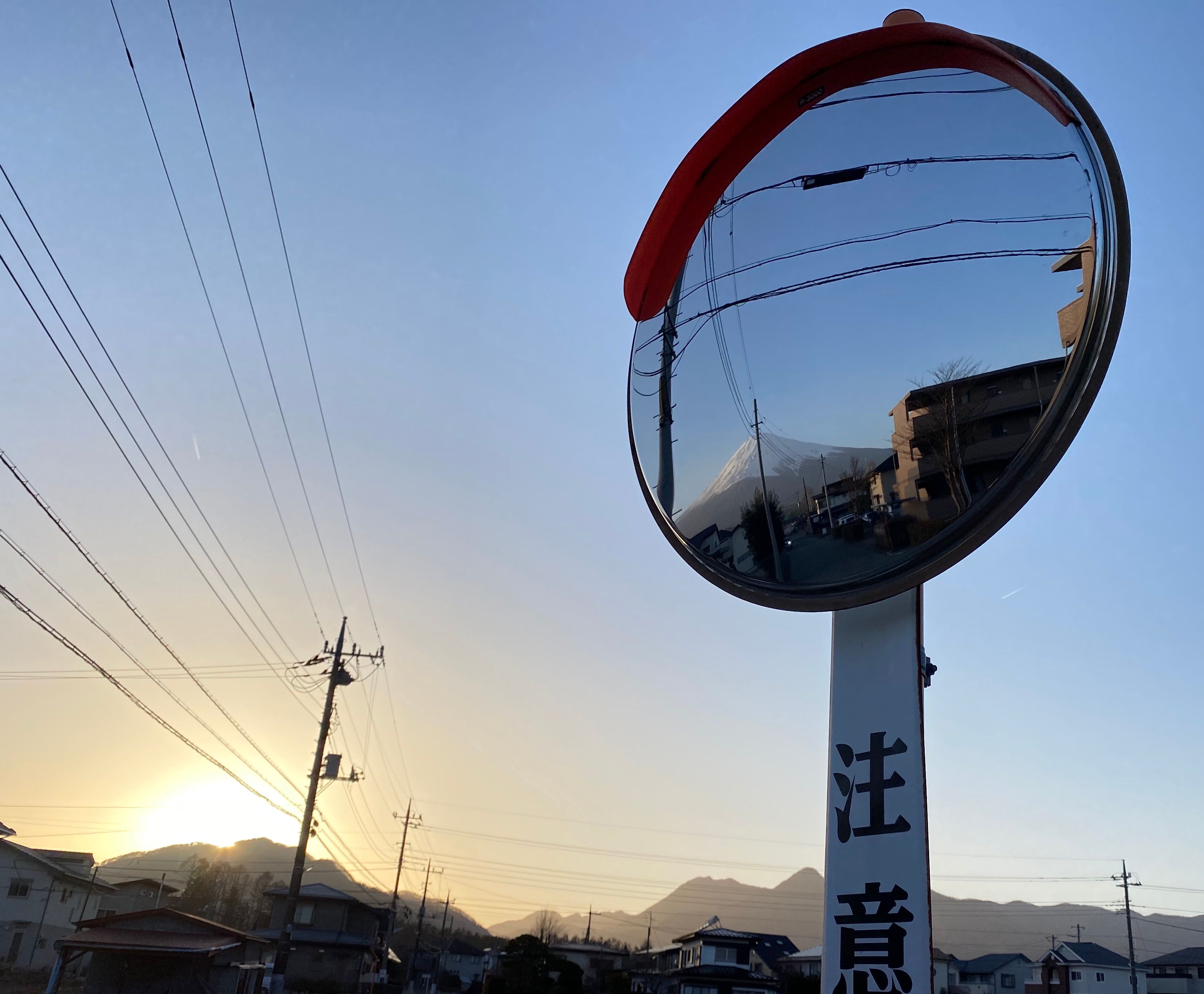
If you thought that natto (fermented bean curd) was the only ‘unusual’ Japanese food out there, think again! Why not give one of these a go on your next trip to Japan?
For every holiday-maker who would prefer to stick to familiar foods while on holiday there is an adventurous foodie who is just itching try out all the local delicacies - the weirder the better! With this in mind, we’ve created a list especially for all you travelling gourmands out there - it has everything on from dried fish and grated yam paste to spicy fish roe and offal stew.
And for those of you who are less daredevil when it comes to food - please don’t worry! Japan is fully equipped with an abundance of restaurants offering Japanese staples that are well-known in the UK, from ramen and gyoza to sushi and tempura, as well as global cuisines, from Italian pizza and pasta, Chinese takeaway and Indian curry to American-style burgers, Spanish tapas and French cuisine.
Himono (dried fish)

“Himono” (干物) or “sakana no himono” (魚の干物) refers to “dried fish” - and you might see these little fellows drying in the sun when you visit Japan, either near the quayside in coastal fishing villages or at markets or “michi no eki” (roadside rest areas - find out more here).
This method of food preservation has existed since the Jomon Period (14,000-300 BC), in the days way before the invention of the refrigerator, when it was used to preserve fish for consumption all year round.
It might look quite terrifying, but the drying process actually adds to the flavour as the surface layers decompose protein into amino acids, intensifying the umami of the fish. At the same time, the sun’s ultraviolet rays also sterilize the fish.
Popular varieties of fish that are often treated this way include mackerel, sardine, sea bream, eel, sweetfish, and even barracuda. Find out more about himono here.
Mochi (rice cake)

“Mochi” (餅) refers to “rice cake” made of mochigome, glutinous Japanese short-grain rice. The rice is pounded into a paste in a giant pestle and mortar, after which it is coloured, molded into the desired shape and decorated.
Different types of mochi are eaten all year round, but it is also a traditional food eaten at New Year, when local resident or friends often gather to make it in a ceremony called “mochi-tsuki”. Some popular types of mochi include:
- Sakura mochi - a pink-coloured mochi wrapped in an edible salted cherry blossom (sakura) leaf
- Ichigo Daifuku - daifuku with red bean paste and a whole strawberry inside
- Hishi mochi - a diamond-shaped mochi with three layers of pink, white and green
- Kashiwa-mochi - white mochi with a sweet red bean filling wrapped in an oak leaf
- Kusa mochi - green-coloured mochi flavoured with yomogi (mugwort)
- Kiri mochi - hard, plain white, unsweetened blocks of mochi that can be used in cooking savoury noodle and soup dishes
Find out more about mochi here. Learn about more different kinds of mochi here. Did you know? The world’s fastest mochi maker lives in Nara, Japan. Watch him in action on Youtube here.
Dango (rice dumplings)

Find out more about dango here or follow the Japan Centre’s recipe to make “sanshoku-dango” (three-coloured dango) here.
Omuraisu (omelette rice)

“Omuraisu” (オムライス) is short for “omelette rice”, and does exactly what it says on the tin (disclaimer: omuraisu does not actually come in a tin!). Consisting of a large, thin omelette wrapped around rice, omuraisu is an example of yōshoku, or western-influenced style of Japanese cuisine.
Omuraisu is thought to have originated in a western-style restaurant in Tokyo’s Ginza district called Renga-tei around the turn of the 20th century, when western-style food, fashion and culture was very much in vogue. Popular flavourings for the rice inside include chicken, diced vegetables, ketchup, and demi-glace sauce (rich but delicious!).
Omuraisu is a popular go-to comfort food in Japan, and is just as often cooked at home as it is ordered in western-style eateries. With its simple, easily recognisable ingredients, it is particularly popular with youngsters, and is often featured in restaurants’ childrens’ meals.
Motsunabe (offal stew)

A variety of “nabemono”, or stewed dishes or hotpot, motsunabe can be made in either a special Japanese nabe pot or a conventional saucepan. Beef or pork tripe or other offal is simmered in stock until it becomes melt-in-the-mouth soft. The basic ingredients for the stock are soy sauce and garlic with chillies or miso. Cabbage and nira (giant chives) are added and cooked until they wilt down before it is served.
Motsunabe was originally from Fukuoka in the south of Japan, but later spread to Tokyo and the rest of Japan; it is particularly popular in the frigid winter months as a failsafe winter warmer, guaranteed to warm you to the cockles on even the coldest winter’s day.
Senbei (rice crackers)

Today, while specialty senbei makers still exist, especially in traditional neighbourhoods and districts, senbei are sold everywhere from supermarkets and konbini (convenience stores) to department stores and yata (street food stalls) at seasonal festivals. Traditionally, they are cooked by being baked or grilled over charcoal and finished by brushing with a flavouring sauce such as soy sauce or mirin.
Senbei come in various sizes, shapes and flavours, usually savoury but sometimes sweet. Some popular traditional varieties of the crunchy, bite-sized snack include: nori (seaweed), kuro goma (black sesame), ebi (shrimp), togarashi (red chilli pepper), ika (squid), kuromame (black soybean), zarame (sugar), mentaiko (spicy cod roe), as well modern additions such as kimchi, wasabi, curry and even chocolate (one of our personal favourites!).
Umibudo (sea grapes)

On eating umibudo, you’ll experience a popping sensation on your tongue (known as “puchi puchi” in Japanese) followed by a light wave of salt and vinegar which has a distinctive oceanic freshness to it. It has many health benefits as it is extremely rich in nutrients, including vitamins A and C, calcium, zinc, iron, iodine and omega 3 fatty acids. It also contains a high level of vegetable protein per calorie, so is an ideal treat for vegetarian foodies visiting Japan.
Mentaiko (spicy fish roe)

“Meantiko” (明太子) or “karashi mentaiko” (辛子明太子) refers to spicy pollack/cod roe. To make it, raw pollock or cod roe is marinated in a mild chili pepper sauce. Mentaiko is used as a topping or sauce for onigiri (rice ball), sushi, spaghetti and even pizza, amongst many other culinary uses.
Inspired by a similar Korean dish called myeon-gram jeot, it was reportedly brought back and adapted to Japanese tastes by soldiers returning home from the Russo-Japanese War. In fact, the oldest mentaiko shop in Japan, Aji no Mentaiko Fukuya, was founded by a Japanese man born in Busan, Korea, during the Japanese occupation. Find out about 11 more ways to eat mentaiko here.
Tororo (grated yam paste)

Tororo (とろろ) is a sticky paste made by grating nagaimo, a type of Japanese yam or potato, and flavouring it to taste with dashi (Japanese stock), wasabi and spring onions. It is most commonly eaten as a side dish or added to noodle dishes such as udon and soba. The gluey, gloopy texture makes it simultaneously unfamiliar and fascinating as well as somewhat of challenge to eat using chopsticks!
Some recipes made using this slimy ingredient include: Mugitoro, a wheat dish made by pouring cold tororo on top of cooked wheat, Yamakake, a dish combining tuna seasoned with soy sauce and tororo seasoned with dashi, and tororo udon or soba, which is often topped with a raw egg yolk. Find out more about tororo here.
Shirako (fish sperm)

The shirako eaten in Japan usually comes from cod, anglerfish, salmon, squid or pufferfish, and can be eaten raw or cooked. When eaten raw, it is used as a sushi topping or as an appetiser (personally we can’t think of anything less appetising, but there you go!) accompanied by a soy sauce, wasabi and ponzu (citrus soy sauce) dipping sauce.
When cooked, the texture is said to resemble creamy custard. Cooked shirako dishes include chawanmushi (steamed egg custard), yakimono (grilled), and nabe (hotpot). It’s worth pointing out that Japan is far from the only country to have a habit of chowing down on fish semen; it’s also a delicacy in the cuisines of Sicily, Russia and Romania.

















































